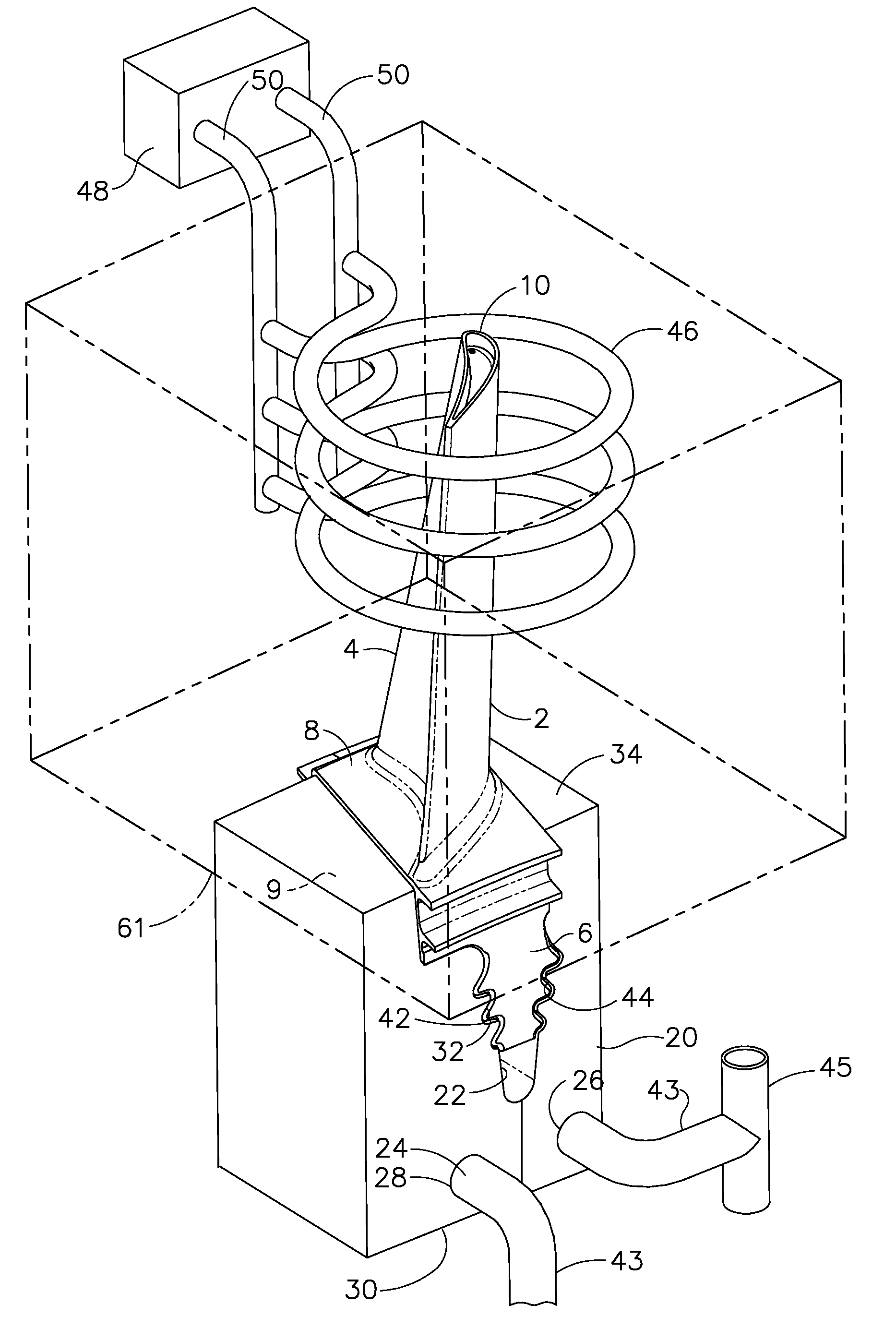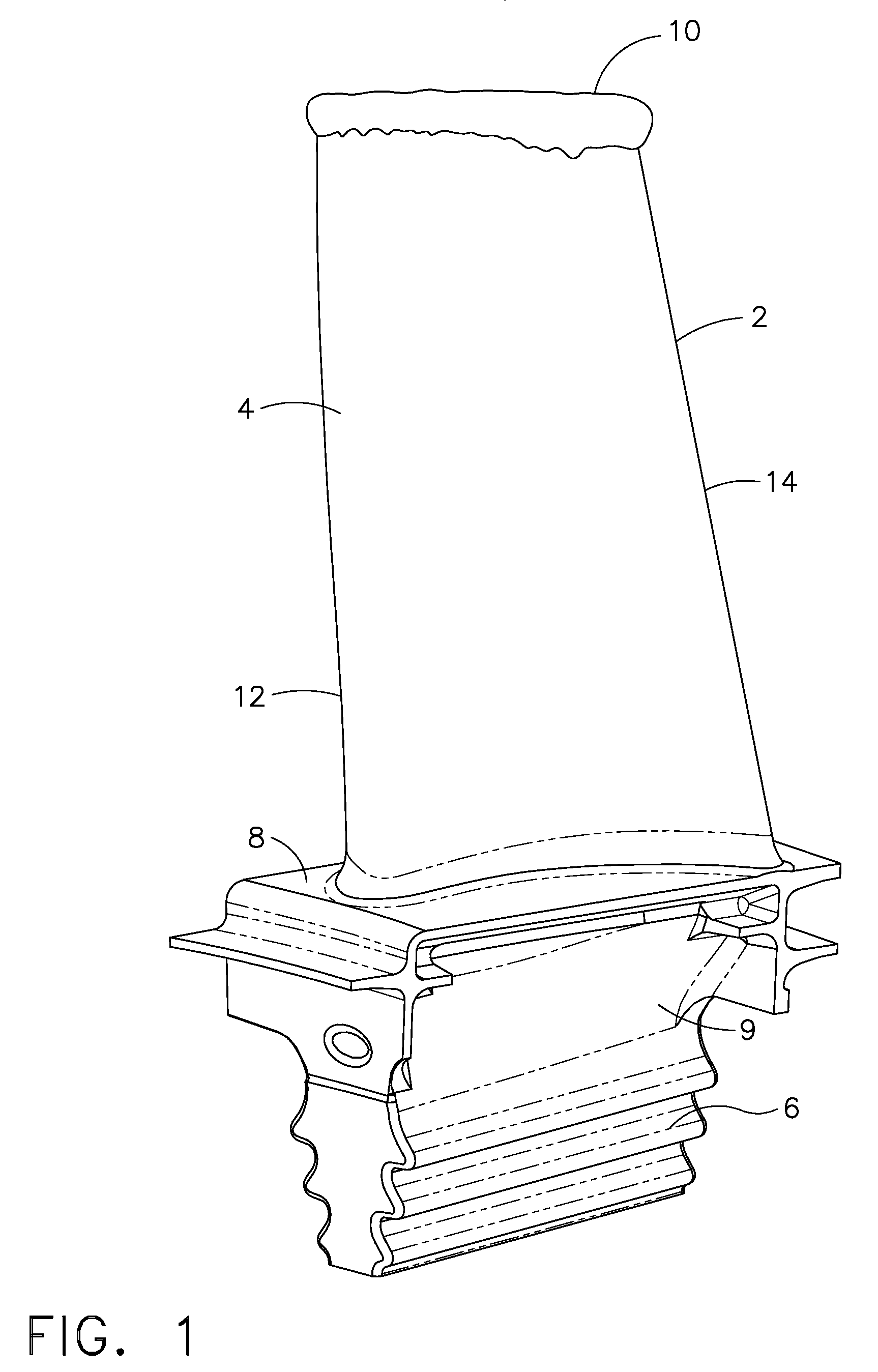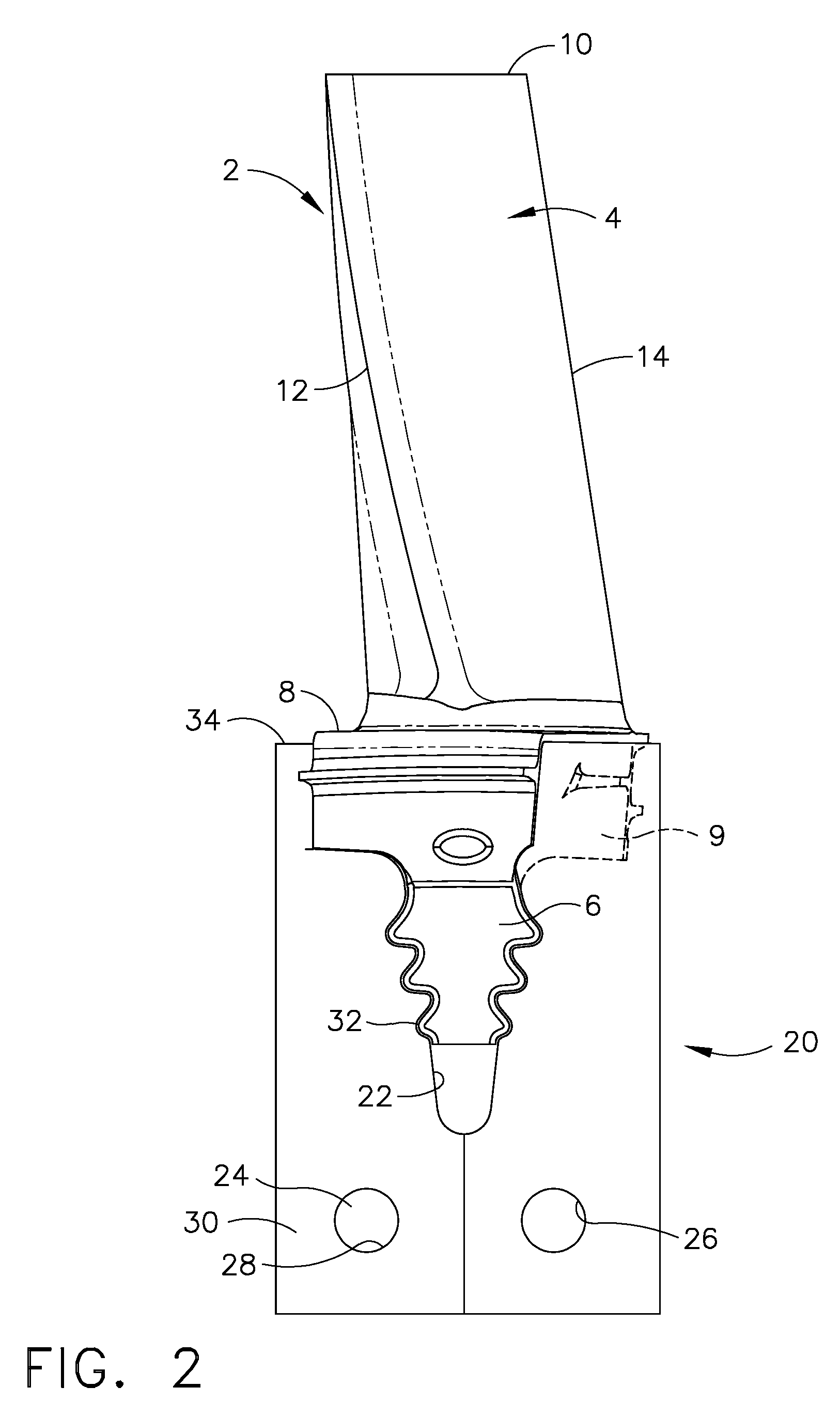High pressure turbine airfoil recovery device and method of heat treatment
a high-pressure turbine and recovery device technology, applied in heat treatment equipment, furnaces, manufacturing tools, etc., can solve the problems of high operating stress, inability to recover metallurgical damage, and high operating stress, and achieve the effect of maximizing the energy withdrawn from hot gas, restoring fatigue and creep-rupture properties of blades, and reducing leakage of hot corrosiv
- Summary
- Abstract
- Description
- Claims
- Application Information
AI Technical Summary
Benefits of technology
Problems solved by technology
Method used
Image
Examples
Embodiment Construction
[0026]The present invention provides a method for solutioning the airfoil portion of a turbine blade and then uniformly age hardening the airfoil portion of the turbine blade without recrystallizing the portion of the turbine blade below the platform. This restoration is required once the microstructure of the airfoil portion has been modified. This solutioning and age hardening treatment of the airfoil portion of the turbine blade restores mechanical properties uniformly to the airfoil portion of the blade, while restoring a substantially uniform microstructure. The present invention further provides apparatus in the form of a fixture for accomplishing the solutioning and subsequent age hardening of the airfoil portion of the turbine blade.
[0027]A typical turbine blade 2 is depicted in FIG. 1. However, the invention is not limited to a turbine blade, and may include other configurations having a thin section and a thick section wherein the microstructure of one section must be modi...
PUM
| Property | Measurement | Unit |
|---|---|---|
| temperature | aaaaa | aaaaa |
| temperature | aaaaa | aaaaa |
| temperature | aaaaa | aaaaa |
Abstract
Description
Claims
Application Information
 Login to View More
Login to View More - R&D
- Intellectual Property
- Life Sciences
- Materials
- Tech Scout
- Unparalleled Data Quality
- Higher Quality Content
- 60% Fewer Hallucinations
Browse by: Latest US Patents, China's latest patents, Technical Efficacy Thesaurus, Application Domain, Technology Topic, Popular Technical Reports.
© 2025 PatSnap. All rights reserved.Legal|Privacy policy|Modern Slavery Act Transparency Statement|Sitemap|About US| Contact US: help@patsnap.com



